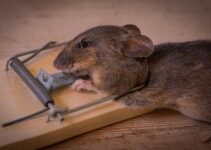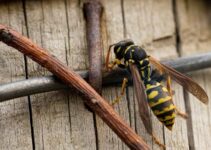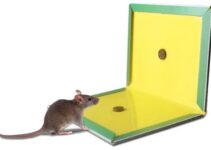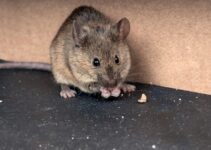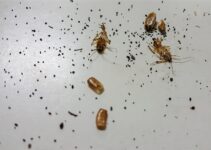Mice, like every mammal, desire and hunt for food and shelter. If your home offers them these luxuries, they will nest and make themselves comfortable in your home.
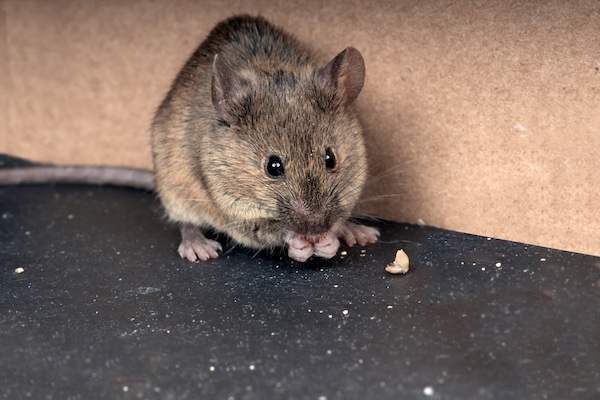
What Are Mice Attracted to in a House?
4 major things that attract mice to homes include:
1. Warmth
Mice will always seek warmth, especially during harsh weather. They detect the warmth of a house via cracks and decide the best place to nest. A popular spot is areas close to the water heater in your bathroom.
2. Food
Mice cannot say NO to food. They prefer to find shelter in environments with lots of food like restaurants and kitchens. While they are omnivores, they prefer grains, seeds, and nut derivatives.
3. Clutter
Aside from the warmth, mice also fancy disorganized spaces. Cluttered areas tend to have a lot of hiding places for mice. Areas in your home that may possess this quality include garages, attics, and small storage spaces.
4. Cracks & Openings
Mice love gaps and cracks. They enable them to travel within walls and cause damage. Check the doors, windows, roofs, and walls of your home for openings.
5 Humane Solutions to Mice Infestations
1. Use Repellents
The use of repellents can easily drive rodents out of your home. Repellents have a chief property, which is ammonia. Mice hate the smell of ammonia but if the smell poses any problem to residents there are natural alternatives.
A concoction of salad oil with horseradish, cayenne pepper, and garlic is one of them. They have less effect on home residents and should be sprayed where mice are most active.
Sealing all entry points such as cracks, holes, or spaces in doors or windows is also a good way to control an infestation.
2. Get a Cat or Rat Terrier
Mice and cats or rat terriers cannot co-exist. Once mice continually detect the presence of cat(s) in your home, they will stay away. If you are a pet lover, you should consider this option to keep your home rodent-proof.
Note: If poisoned bait has already been employed, getting a cat is a terrible idea. For those who already own a cat, ensure his or her movement is restricted (away from the poisoned areas).
3. Live Traps
Live traps capture mice alive. With them, you can either release mice into the wild or release them within your home to know where exactly they come from. You should only release mice into the wild during warm and friendly weather.
During cold and adverse weather conditions, wildlife rehabilitators are strongly recommended. You can also kill a mouse humanely after being captured by a live trap.
4. Traditional Spring Trap
Unlike live traps, spring traps are designed to kill mice the moment they are triggered. This is very humane as it kills mice swiftly and without suffering or pain.
Spring traps become necessary when mice’s population explodes and there is a need to exert immediate control. Setting up this trap requires bait like peanut butter or fruit jam.
They must be placed in active environments and close to the wall. Spring traps are most effective at night and after every kill, ensure you wash the trap before reuse.
Sometimes, spring traps may fail to kill a mouse if the head is not snapped. In cases like this, the best way to kill the mice is by hitting them with a hammer.
While most people execute this on the trap, it is advisable to do this outside your home (with the mouse released in a sealable plastic bag).
5. Electrocution
Death by electrocution or the use of electric traps is considered a modern and effective way to get rid of mice humanely. This trap kills mice by sending high voltage shock through the mice’s body once it steps on the trap to eat a high-protein or sugary bait.
Electric traps contain the whole event, hence, have less risk of exposing you and your family to bacteria or viruses. Greenlight usually confirms a kill and the safety switch renders it harmless to everything. The trap must also be carefully cleaned before being reused to maintain effectiveness.
Conclusion
As much as mice love to feed and keep a low profile, it is a trait they cannot exhibit because they reproduce rapidly. They also damage wires, and pipes and can easily contaminate food, which is why they must be killed, repelled, or released into the wild.
References
- https://www.suburbanpest.com/about/our-blog/4-things-attract-mice
- https://www.tomcatbrand.com/en-us/library/tips-and-strategies/what-attracts-mice-to-house
- https://www.mrpest.ca/rats-mice-attracted-to-your-home/
- https://www.bughousepestcontrol.com/5-things-you-could-be-doing-that-attract-mice/
- https://www.moyerpest.com/blog/post/what-s-attracting-mice-to-my-property
